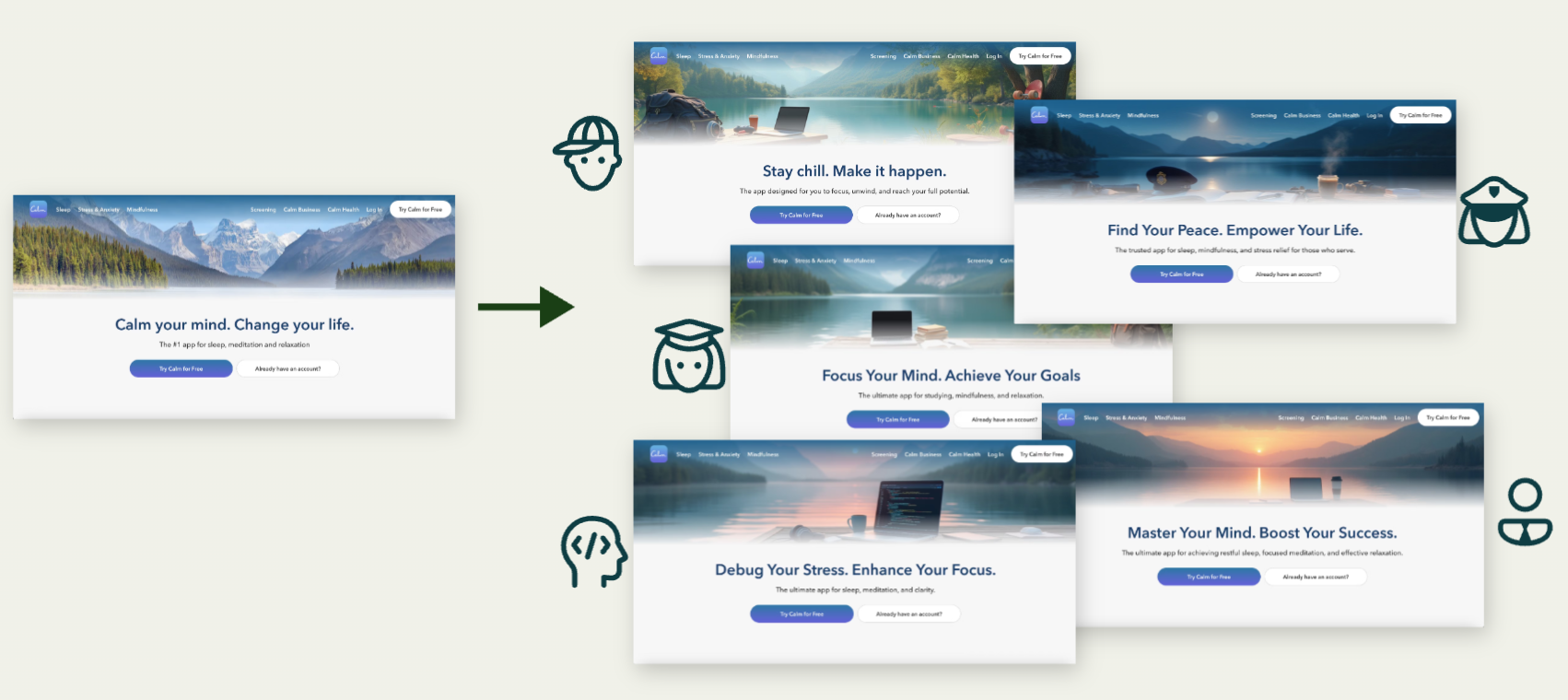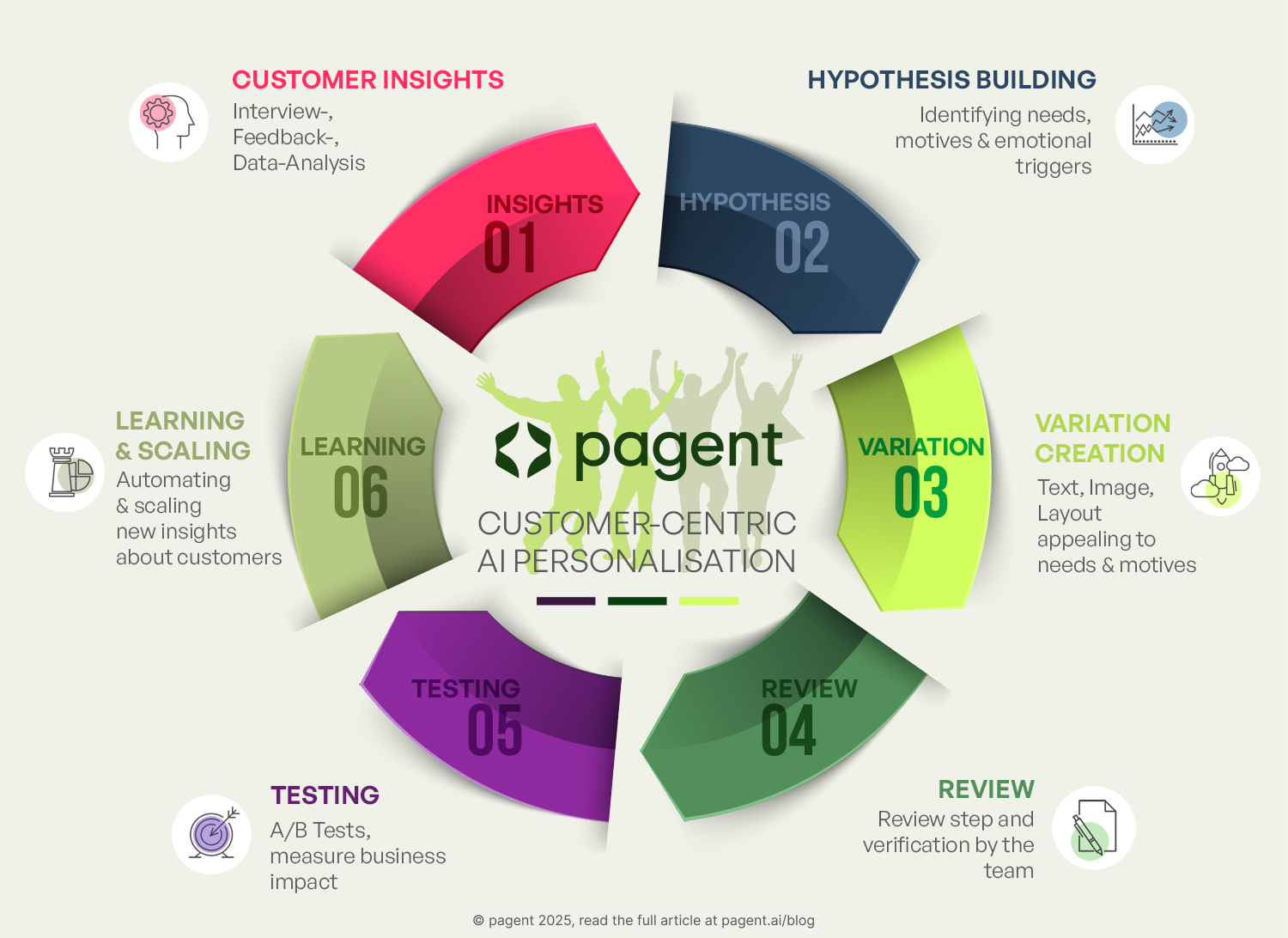Customer-Centric Personalization: Why personalization needs to be personal
 Constantin, Co-Founder @ pagent
Constantin, Co-Founder @ pagent 5 minutes to read ・ insights on customer centricity, personalization, AI and our future
How personal is personalization today? When visiting an e-commerce site, you receive a personalized product grid and search results, personalized recommendations in your checkout cart, and occasionally different layout structures or email notifications. All this is aligned with your demographic, order data and behavior on the website, placing you in a box of objective descriptions. Yet this discrete categorization often fails to capture the nuanced, ever-changing nature of human preferences and desires.
We are not objects; we are subjects. Listen to the customer!
We are not objects; we are subjects. We buy with different intents, have different emotional drivers, and experience different pains and needs that guide our decisions. We express and understand things differently.
When customers feel misunderstood, ad spend is wasted, conversion rates are low, and the long-term customer-brand relationship risks being harmed.
Insights about our subjective qualities, as a customer, cannot be derived from objective facts about us. These different individual factors have to be discovered during conversations, in interviews, surveys, and tests.
Marketers should lead business and product decisions
Marketers know that to find a personal approach to the customer, it’s not enough to just analyze heatmaps, drop-off points, and bounce rates. Real personal personalization requires a holistic approach that combines both quantitative and qualitative insights.
By integrating the full range of insights, including customer interviews, surveys, feedback, and research, marketers are building a deep understanding of the customer in a comprehensive way.
The marketer’s skill is to combine this data and formulate various hypotheses to personalize and optimize campaigns, funnels, and websites, and rigorously test and analyze the different outcomes. This makes them the most knowledgeable people and departments in companies to understand and act on the insights about the customer.
Customer centric stands for a business philosophy and strategy. We believe that marketers are in the prime position to develop the best understanding of the customer and thus should lead their companies’ customer-centric strategies.
Customer centricity is a business approach that prioritizes understanding and meeting customer needs and desires above all else. It's a philosophy that places the customer at the heart of all business decisions, aiming to build long-term relationships and foster loyalty by creating positive customer experiences throughout their journey. This involves actively listening to customers, understanding their preferences, and tailoring products, services, and interactions to exceed their expectations.
The Challenge
Siloed data, fragmented processes, and creation bottlenecks have made scaling customer-centric personalization impossible in the past.
This is where generative AI comes into play. With agentic AI workflows, we can automate large parts of the process between gathering customer insights and implementing tests.
Why did we have to wait for generative AI to enable customer-centric personalization?
Personalization today is not customer-centric. Why? Because, without generative AI, we did not have the tools to scale customer-centric personalization.
The different qualities that you have to understand and learn about your customer in order to become customer centric are highly complex, it’s not possible to easily fit them into pre determined boxes. Conventional statistical and machine learning methods fall short once we want to analyze these complex qualities.
With generative AI we are now much more capable to analyze these kind of qualities. And furthermore we can produce personalizations on a continuous spectrum without predetermined templates.
Gen. AI can heavily assist in the process of understanding your customers (automated interviews, product research with digital twins), analyzing customer data (interview analysis, data science assistants), creating content (copy, images, layouts), and speeding up processes (agentic workflow assistants).

Combination of AI capabilities for continuous personalization, see also Harvard: AI will shape the future of marketing
What do we do at pagent?
When the AI is aware of your brand identity, adheres to your company guidelines, learns to understand your customers, and implements changes directly into your website after approval, then you are using pagent AI.
Pagent turns customer insights into real impact. After systematically understanding your different customer cohorts, various text, images, and soon layout variations are created for your website. These variations can be fed back via AI chat and sent into a review process with all relevant stakeholders to get approval for live deployment. Every change that is shown to customers is measured for its impact on clicks, signups, sales, or any manually defined KPI. The impact of changes can be continuously monitored, and results are used to further refine your and pagent’s understanding of the different customer cohorts in order to improve even further.

Pagent personalizes websites to better appeal to your customers on an emotional level.
In this process, pagents’ focus lies on a holistic approach to changes. If we want to speak to a specific emotion of a customer cohort, we need to adapt multiple headlines, copies, descriptions, and images to provide a well-rounded experience. Therefore, pagent understands websites as a whole and changes not just individual parts.
Companies using pagent
- launch A/B tests every few days instead of weeks,
- collect stakeholder feedback easily and automatically integrate it,
- appeal better to their customers and continuously improve, driving conversions.
Personalization most often drives a 10%-15% revenue lift. With specific companies reaching up to 25%!
According to a 2021 study conducted by McKinsey.
Personalization is the most powerful strategy to achieve marketing performance goals. With Pagent, we build an agentic system to easily scale it.
We prepared an infographic that summarizes the key points of customer-centric personalization. Feel free to download and share it with your team. 👇
Ready to Transform Your Personalization Strategy?
See how pagent can help your team move from traditional to customer-centric hyper-personalization. Discover how leading companies are driving 10-25% revenue lifts with AI-powered personalization.
- Free personalized consultation
- No commitment required

 Book a Demo
Book a Demo